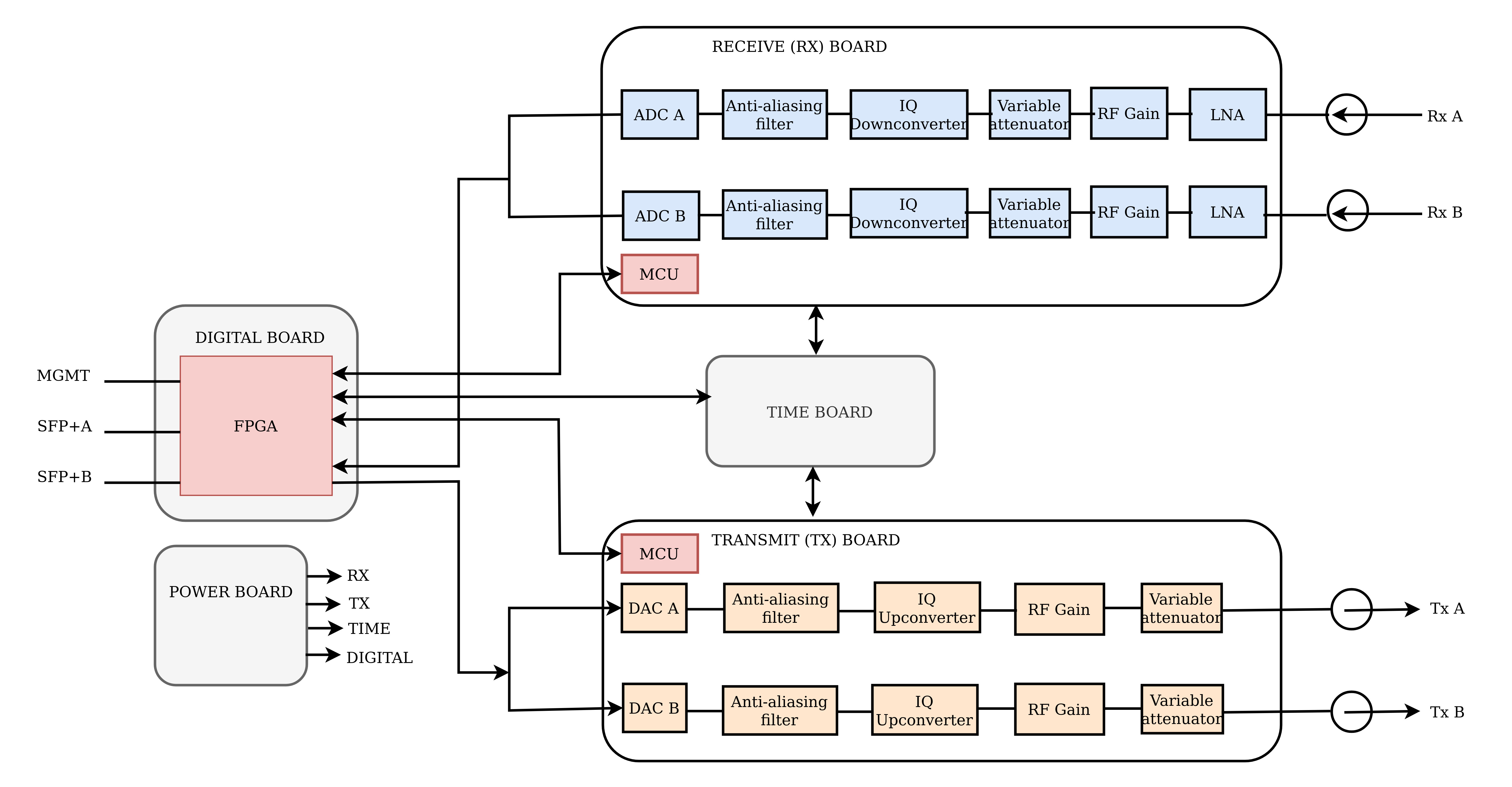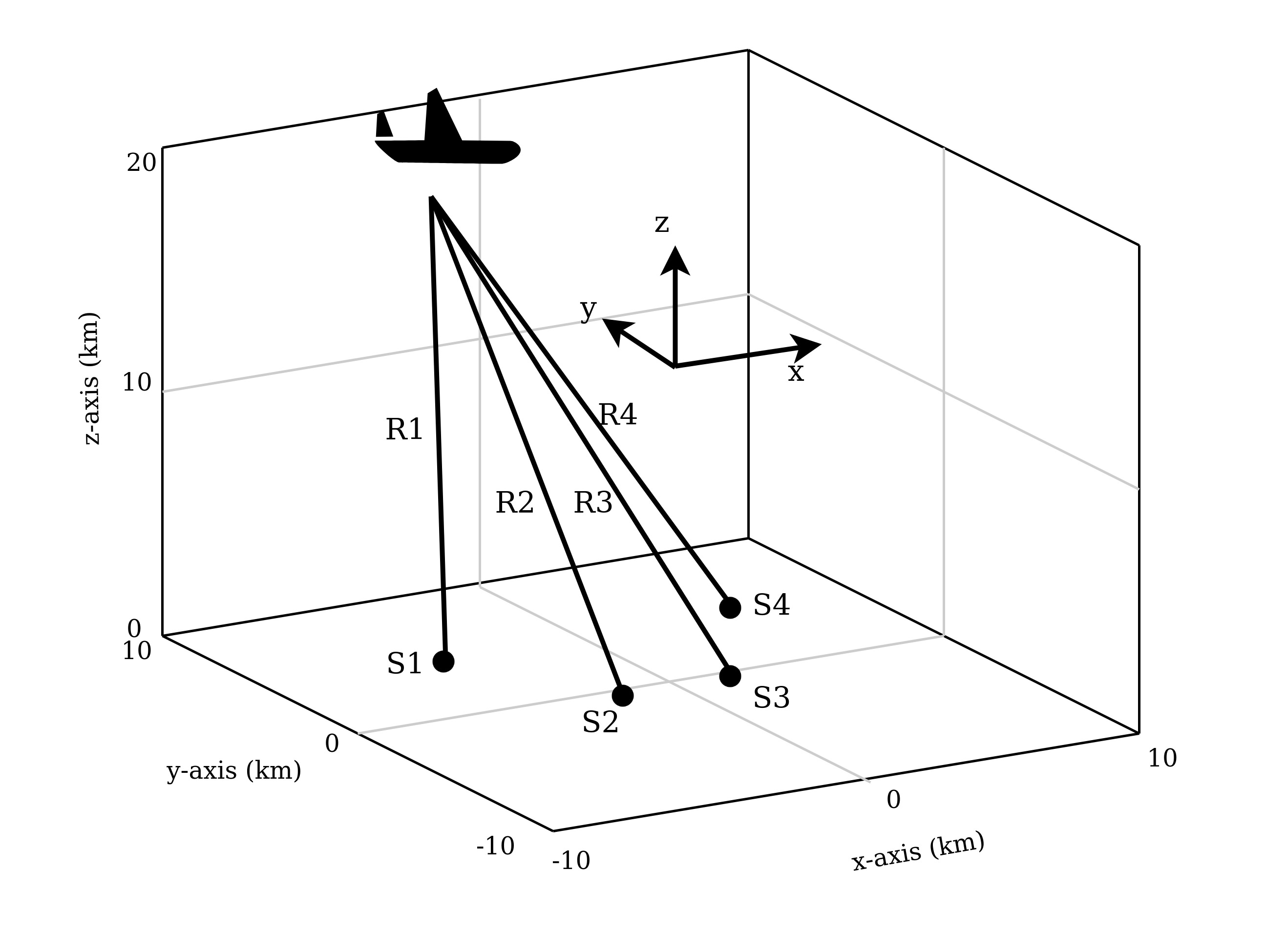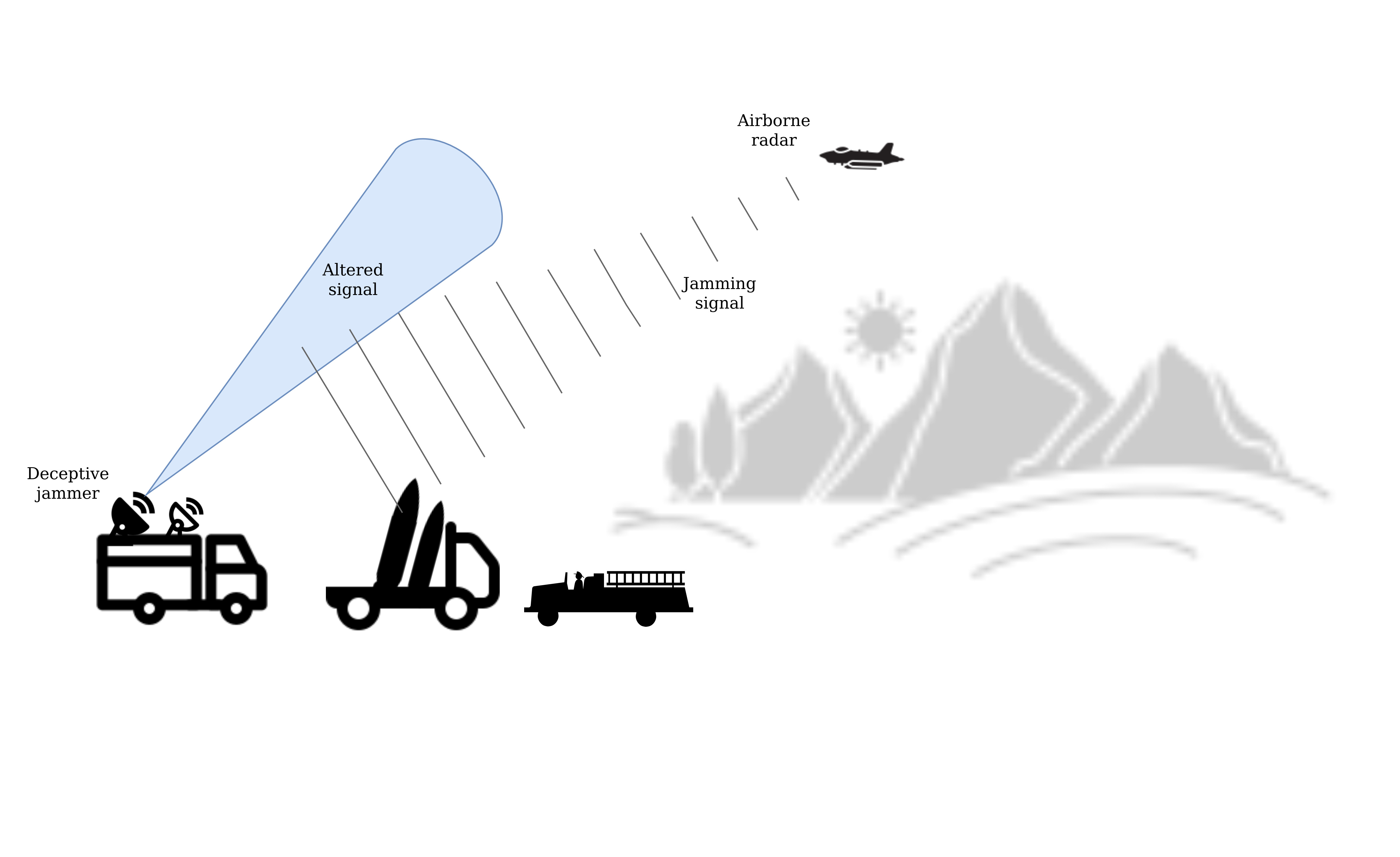3 Leading Defense Markets For SDR Systems
By Brendon McHugh, Field Application Engineer & Technical Writer, Per Vices
Modern defense systems use advanced RF and signal processing technologies to acquire and process huge volumes of data at high speeds. Software defined radio (SDR) technology is revolutionizing how RF systems for use in mission critical defense systems are implemented. Defense systems benefiting from SDR technology include radar systems, spectrum monitoring and recording systems, signals intelligence (SIGINT) systems, and electronic warfare (EW) systems.
This article explores how SDR systems are integrated into various defense systems including spectrum monitoring applications, SIGINT, and EW. It also discusses the specifications that are critical for these applications and explains how SDR technology benefits these defense systems and the various implementation challenges that they help to overcome.
Overview of SDR Systems
The SDR paradigm replaces hardware-based components, such as modulators, coders, and equalizers, with software-based components that run on general-purpose computing devices or field programmable gate arrays (FPGAs). SDR platforms come in a variety of sizes and complexity levels. Small, low-power SDR platforms find applications in sensors and actuators of embedded systems, such as drones. On the other hand, complex Multiple-Input Multiple-Output (MIMO) SDRs that offer high data throughputs and high sample rates are used in performance-demanding applications such as spectrum monitoring and recording. Figure 1 shows a high-level overview of a high performance SDR system.

The radio frontend (RFE) of an SDR system comprises one or more transmit (Tx) and receive (Rx) channels, each of which offers a wide tuning range, typically tens of gigahertz. Rx chains have various components including a low noise amplifier (LNA), attenuator, anti-aliasing filters, IQ downconverters, and analog-to-digital converters (ADCs). Tx chains feature many components including anti-imaging filters, RF gain blocks, local oscillator (LO), IQ upconverters, and digital-to-analog converters (DACs). The mixed signal interface features DACs for the transmit chains and ADCs for the receive chains. Most high performance SDR systems feature completely independent Rx and Tx chains.
High performance SDR platforms feature an FPGA with a broad array of on-board digital signal processing (DSP) capabilities including data packetization over Ethernet links, upconverting, downconverting, modulation, and demodulation. These capabilities allow implementation of advanced systems with low latency performance. The FPGAs also allow implementation of application-specific functions, such as security schemes, channelization algorithms, and artificial intelligence (AI) and machine learning (ML) algorithms. Furthermore, these FPGAs are capable of performing communication between the SDR system and the host or network, packetizing data, and transporting it over SFP+/qSFP+ communication links at transmission rates of 10-100 Gbps. The host system is connected via the SDR's Ethernet and MGMT ports and is used for various functions including configuring and controlling the SDR, and sending, receiving, capturing, and monitoring raw IQ data.
The architecture of SDR platforms makes them suitable for a broad array of applications. Here we discuss some defense applications and how the specifications of SDR platforms benefit them.
1. Spectrum Monitoring And Recording
Spectrum monitoring is a critical part of spectrum management and entails monitoring, recording, and analyzing a portion of the spectrum. It helps to detect and identify various problems and is usually the first step in mitigating various types of signal attacks. Spectrum monitoring also helps to assess spectrum availability and is commonly incorporated in SIGINT applications to enable analysis of transmission patterns, characterization of signals and emissions, detection of illicit transmission, and management of regulated spectrum.
Some of the SDR specifications that are critical for spectrum monitoring and recording applications include instantaneous bandwidth, MIMO channels, and sensitivity of the RFE. The instantaneous bandwidth of an instrument is mainly determined by its filters, sampling rate, and the bandwidth of the ADC. Highest bandwidth SDR systems offer wide instantaneous bandwidth, typically 1-3 GHz. Moreover, MIMO channels of an SDR system enable a single device to be connected to multiple antennas to cover an even wider frequency bandwidth. The high sensitivity of the RFEs used in SDR systems enables detection of weak signals and helps to avoid intermodulation products generated by high-amplitude carriers within these bands.
Capturing wideband signals and recording them demands a host system with high data transfer capability and sufficient storage capacity. Since large amounts of data are captured during spectrum monitoring, an efficient and fast data transfer is required. Excellent performance is achieved by selecting an SDR that can support packetization of data into 100 Gbps Ethernet and a host with FPGA accelerated network interface cards (NICs), huge amounts of RAM, powerful CPU, and RAID configuration.
SDRs offer a broad range of benefits to spectrum monitoring and recording applications. Compared to traditional instruments that utilize dedicated hardware-based components that are difficult to upgrade, SDR systems employ flexible components that can be updated or upgraded easily and quickly. The high flexibility of SDR systems also ensures adjustable wideband operation, adjustable sample rates, extendable channel counts, and ultrafast retunability.
Further benefits of using an SDR include optimizing the RFE to meet the specific needs of an application. For instance, the specific sensitivity of each radio chain can be enhanced by using highly linear low noise amplifiers (LNAs). The ruggedness of a system can also be enhanced to make it suitable for use in harsh environments.
Traditional spectrum monitoring instruments tend to have low probability of intercept (POI) since they scan for offending signals by sweeping from the minimum to the maximum frequency. In comparison, SDR-based monitoring instruments can continuously monitor the spectrum for frequencies within their specified range. This approach offers a higher POI and is suitable for capturing signals with short duration.
2. SIGINT
SIGINT is closely related to spectrum monitoring and recording and entails analyzing and post-processing captured signals with the aim of gathering intelligence. It has two key sub-disciplines: Communications Intelligence (COMINT) and Electronic Intelligence (ELINT). COMINT entails intercepting communication between people while ELINT entails intercepting electronic signals which are used for non-human communication purposes. The gathered intelligence is vital in characterizing the actions, intentions, and capabilities of foreign adversaries.
Today's battlefields are dominated by RF systems, and the capability to gather intelligence from the electromagnetic spectrum can make a huge difference in determining battlefield outcomes. SIGINT enables the location of the source of enemy signals to be identified, thereby giving its user a competitive advantage.
SDR instruments for use in SIGINT should be capable of capturing various RF emitter characteristics including amplitude, power, Direction of Arrival (DOA), and Angle of Arrival (AOA) — key characteristics in applications involving MIMO antennas. Other characteristics include Time of Arrival (TOA), pulse width, pulse repetition interval (PRI), PRI type, symbol rate, scan type, scan rate, and lobe duration. They should also be capable of measuring additional parameters including intra-pulse and inter-pulse frequency modulation, PRI modulation characteristics, continuous waves (CW), and various missile guidance characteristics.
Instruments for use in SIGINT must have exceptional geolocation accuracy. With MIMO antenna arrays, SDR systems can determine the location of an RF emitter by exploiting various techniques, such as Phase Difference of Arrival (PDOA) and AOA. Figure 2 shows a three-dimensional view of a Time Difference of Arrival (TDOA) system with four receivers.
Most defense systems have strict time requirements and demand instruments that can deliver precise time keeping. SDR instruments can stamp data packets with VITA 49 time stamps and synchronize them to UTC to ensure high measurement accuracy. Furthermore, SDR with FPGA resources are preferred for SIGINT applications since custom DSP algorithms can be implemented on FPGAs.

There are many benefits of integrating SDR platforms into SIGINT systems. SDRs enable execution over-the-air as well as remote reprogramming. These capabilities help to cut the time and costs linked to operating and maintaining the instruments. The high sensitivity of the RFEs used in SDRs makes them capable of monitoring signals emitted by low power military systems in congested co-channel environments and zero in on the signal of interest.
By using an SDR system and open source platforms, such as GNU Radio and GNU Octave, it is possible to perform various signal processing operations. These open source platforms offer a variety of features for signal analysis including constellation plots, waterfall plots, and so on. Raw IQ data suffers degradation and processing operations are required to correct them. These impairments are usually caused by carrier frequency and phase offsets, multipath fading, various sources of noise, and IQ imbalance.
3. Electronic Warfare (EW)
Electronic warfare is closely related to SIGINT and consists of three main sub-disciplines: electronic attack (EA), electronic protection (EP), and electronic warfare support (EWS). These functions are performed from land, sea, air, space, and cyberspace by manned, unmanned, and unattended systems.
EA offensives are carried out in various ways including jamming enemy communication and command and control systems; confusing enemy surveillance, intelligence, and reconnaissance systems by using electronic deception; and disabling enemy systems by using directed-energy weapons.
EP entails applying various techniques to protect systems against EA offensives by an enemy. These tactics include employing anti-jamming technologies, deconfliction of spectrum resources, and careful planning and management of spectrum resources to prevent interference during an attack operation.
RF systems for use in EW must have fast retuning time to ensure fast sweeping and MIMO channels in order to handle multiple antennas required for jamming enemy systems. Furthermore, EW systems should be capable of operating over a narrow or wide frequency band and measuring pulses with high accuracy. In addition, they are required to have a high dynamic range and excellent interference rejection capability.
Channel and spectrum masking are critical EP operations and entail using controlled energy on friendly spectrum resources in a manner that protects signals emitted by friendly systems against enemy's monitoring and signal intelligence systems. This radiation should not significantly interfere with the operations of friendly communication and electronic systems.
Jamming is a critical EA operation, and systems for use in EW are required to have FPGA resources capable of generating jamming signals. Both noise jamming and deception jamming are commonly used in battlefields. Noise jamming entails generating a noisy signal, modulating it, and transmitting it at the enemy radar frequency. Saturating the enemy receiver with high power level noise signals makes it difficult for it to acquire accurate range, azimuth, and elevation information. In the case of deception jamming, complex circuits are employed to process and re-transmit jamming signals in a manner that confuses the victim radar to think that a false target is a real target. This jammer alters the signal received from the enemy radar to provide it with false information. Figure 3 shows a simplified illustration of a deceptive jamming system.
EA systems are also required to have FPGA resources to support advanced signal processing techniques, such as digital beamforming. The beamforming technique allows RF energy to be directed to a target during a jamming operation.

There are many benefits of integrating SDRs into EW systems. To start with, SDR platforms come in a variety of sizes making it easy to deploy them in a wide range of defense systems.
SDR systems are capable of performing multiple functions, and a single unit can be used as a missile warning system, counter UAS system, airborne chaff countermeasures system, and direction finding system.
In addition, SDR platforms can be easily customized to meet military specifications. Compared to traditional EW instruments, the reconfigurability of SDR systems allows updates and upgrades to be implemented faster and at a lower cost.
About The Author
Brendon McHugh is a field application engineer and technical writer at Per Vices Corporation. Brendon is responsible for assisting current and prospective clients in configuring the right SDR solutions for their unique needs and possesses a degree in theoretical and mathematical physics from the University of Toronto. Per Vices has extensive experience in developing, building, and integrating high performance software defined radios for defense and electronic warfare applications. Brendon can be reached at solutions@pervices.com.
